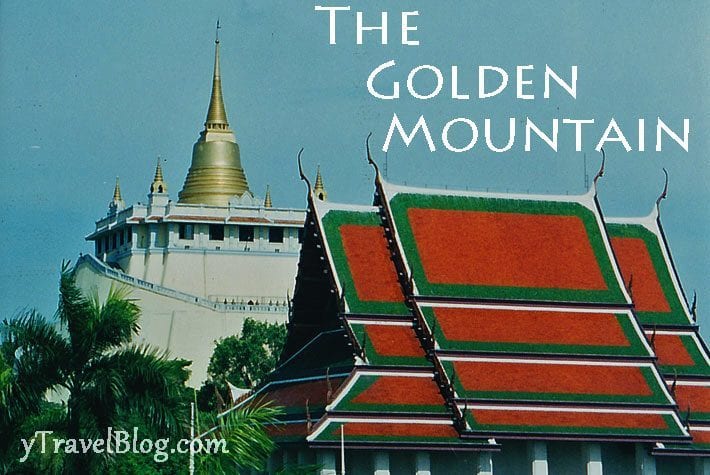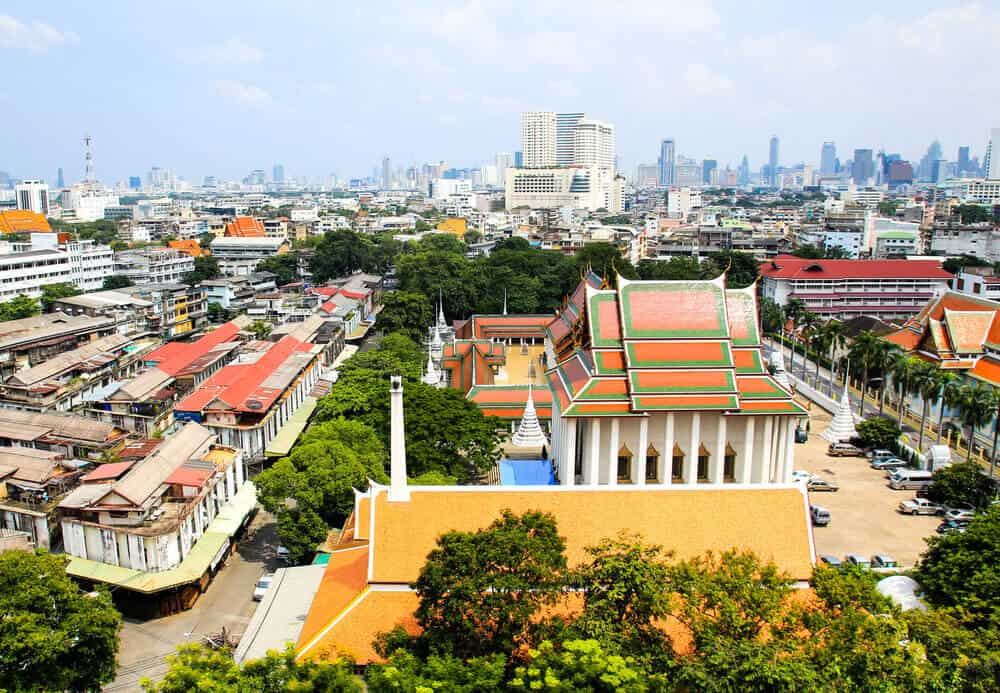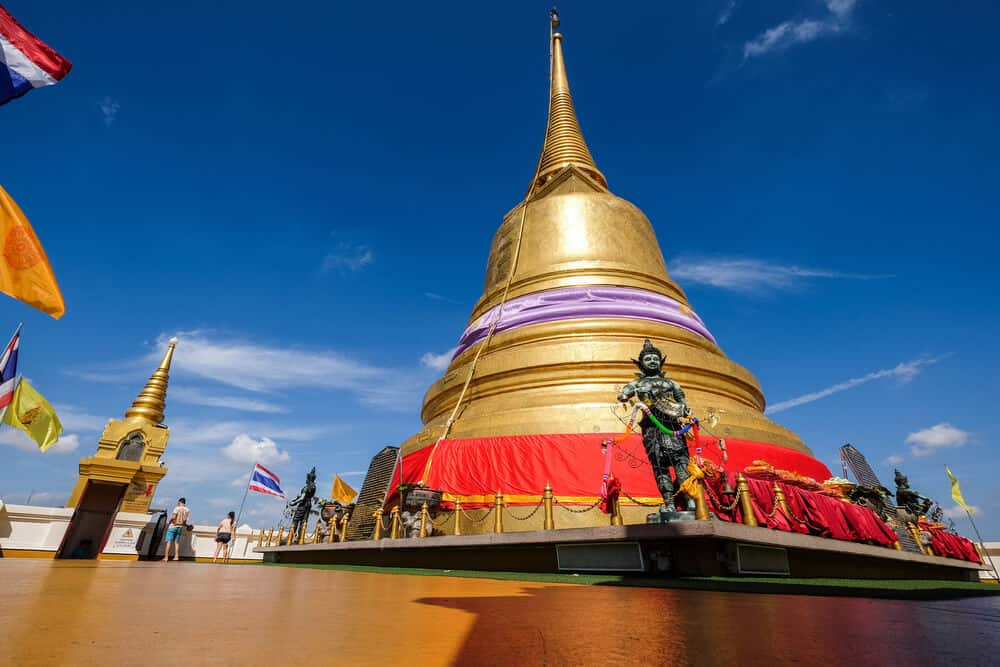This post may contain affiliate links. We may receive a small commission, at no cost to you, if you make a purchase. Read Disclosure.
Nestled in amongst the bustling city of Bangkok, is a hidden gem of peace and tranquility, where ancient traditions are still practiced. This treasure is called the Golden Mountain.
Perched atop a lush green hill, the Golden Mountain, also known as Wat Saket, is an enchanting temple that offers breathtaking panoramic views of Bangkok.
It’s often overlooked by tourists who favor the more well-known temples in Old Town Bangkok, such as Wat Pho (Temple of the Emerald Buddha) and Wat Arun Ratchawararam Ratchawaramahawihan, making it a serene escape from the city’s hustle and bustle.
In this comprehensive guide, we’ll take you on a journey to discover the wonders of the Golden Mountain. From its rich history and architectural splendor to the mesmerizing views from its summit, we’ll provide you with all the information you need to make the most of your visit.
What Is The Golden Mountain in Bangkok?

The Golden Mountain has a rich and intriguing history that spans for centuries, all the way back to the Ayutthaya period. This iconic temple, standing proudly atop an 80-meter man-made hill, holds secrets that whisper through the pages of time.
On this site, a temple was built in the Ayutthaya period (1350-1767), and was known as Wat Sakae, but was later renamed by King Rama I to Wat Saket Ratcha Wora Maha Wihan after its restoration.
At one time, the Golden Mountain temple was the highest point in Bangkok, but in the mid-20th century, Bangkok saw a huge modern development and it’s no longer the case.
It is said that during the reign of King Rama III, during the early 19th century, embarked on a grand vision to build a magnificent chedi on this site.
However, due to unstable ground conditions and soft soil, the chedi collapsed, leaving behind a mound of debris. Undeterred by the collapsing, the king decided to transform this mishap into an opportunity.

With unwavering determination, King Rama III ordered the construction of a temple complex around the mound, earning the name Wat Saket Temple.
Over the years, this temple has witnessed numerous transformations and renovations, becoming an important spiritual and cultural landmark in Bangkok.
King Rama IV began construction of a small chedi on the hill, but it was completed by King Rama V between 1853–1910 who also covered it in a layer of gold. The golden stupa…
Click Here to Read the Full Original Article at y Travel Blog…
